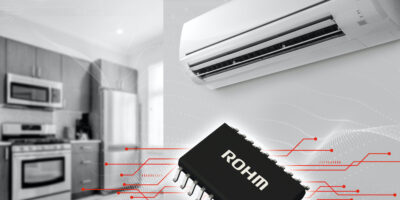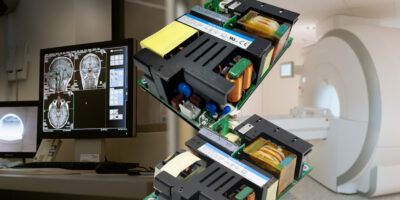AC/DC flyback converter ICs with an integrated 730V breakdown MOSFET make up the BM2P06xMF-Z series by Rohm. The BM2P060MF-Z, BM2P061MF-Z and BM2P063MF-Z are suitable for auxiliary power supply and switch mode power supplies for industrial drives as well as home appliances (including air conditioners and white goods), as well as for factory automation equipment. The flyback ICs require no additional heatsinks and no discharge resistors and capacitors. According to Rohm, they help designers to shorten design time, simplify the circuitry, reduce costs and increase reliability by offering integrated designs.
AC/DC converters for home and industrial use must not only support 85 to 264V AC to accommodate different AC voltages around the world, but must also comply with international standards such as Energy Star and the IEC 62368 safety standard. It is also important for AC/DC converter ICs to be surface mount to reduce factory mounting costs. High heat / high loss DMOSFETs and planar MOSFETs are still widely used in AC/DC converter ICs, however, because it has been difficult to provide tens of Watts of output power in a surface mount package. Rohm has developed the compact, surface mount, high power 45W models with an original low-loss SJ (Super Junction) MOSFET and optimised PWM control circuitry.
Adopting a surface mount package supports automatic board mounting (which was previously difficult to do in the past) and the implemented functions ensure compliance with the IEC62368 safety standard, even when the discharge resistor (a source of loss during standby) is removed.
Original low standby power control technology is applied for extremely low standby power consumption, reports Rohm. Supply voltages up to 60V (VCC) are also supported which eliminates the need for an external step-down power supply circuit.
According to Rohm, the converters reduce standby power by over 90 per cent compared to general products with equivalent performance, and reduce the number of power supply circuit components by four, contributing to greater power savings and higher reliability.
Suitable applications are consumer electronics such as air conditioners, appliances, monitors, and hair dryers, industrial equipment including inverters, AC servos, routers and office automation devices and AC/DC converters up to 45W output in consumer and industrial applications.
The BM2P06xMF-Z AC/DC converters are sampling now, with mass production scheduled for January. There is also an evaluation board available. The converters and board are available for purchase through online distributors Digi-Key, Mouser, and Farnell.







